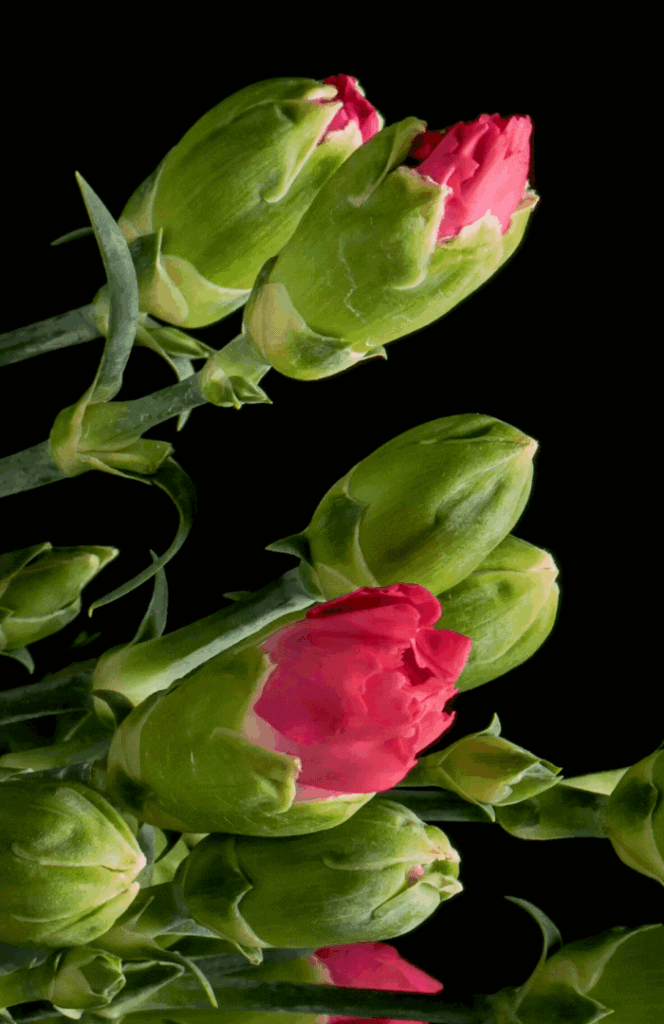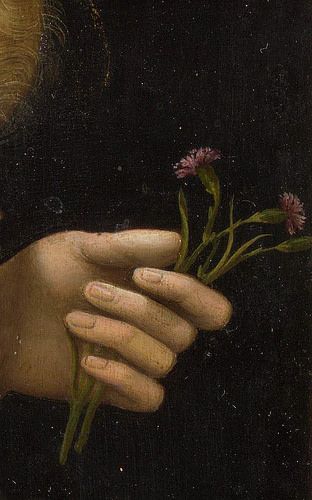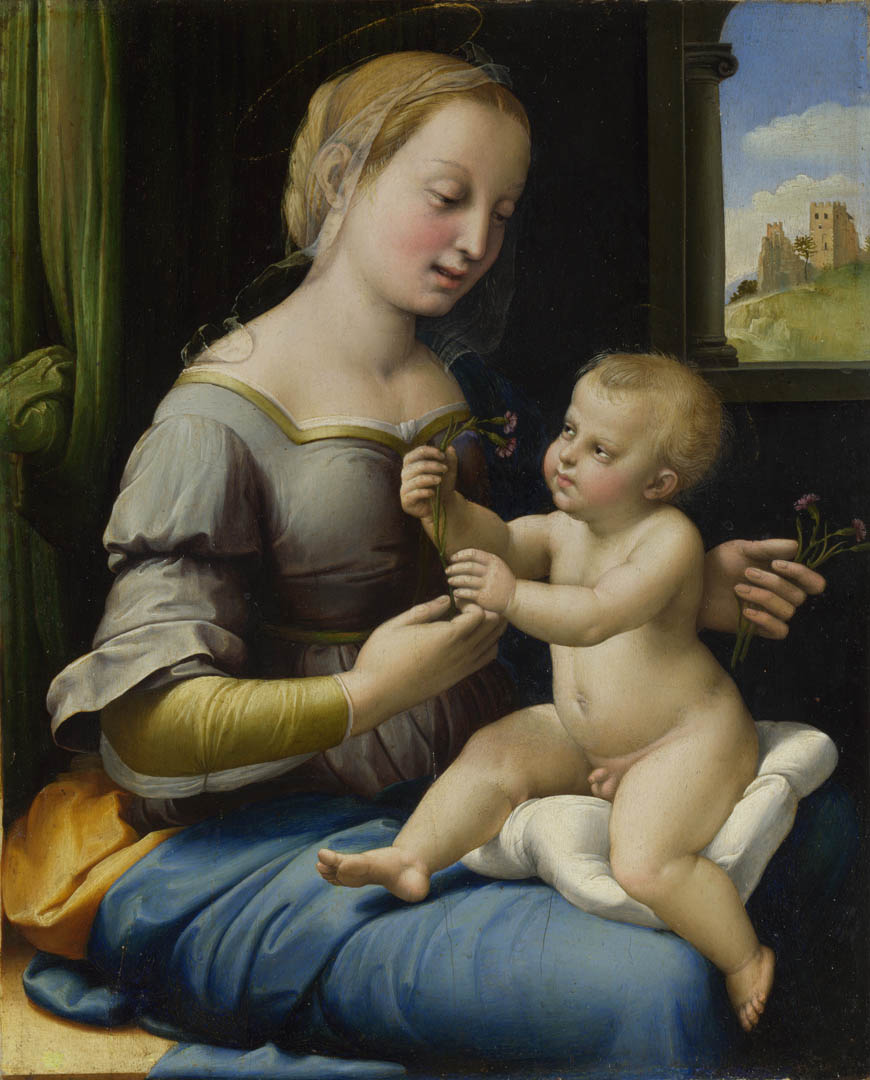
A Symbol of Love and Fascination The primary January birth flower, the Carnation, is known for its ruffled petals and sweet fragrance. It’s a flower steeped in history and symbolism.
Historical Significance The Carnation’s history dates back to ancient Greek and Roman times, where it was used in art and decor. Its scientific name, Dianthus, is said to be derived from the Greek words for ‘divine’ (‘dios’) and ‘flower’ (‘anthos’).
Cultural Symbolism Traditionally, Carnations symbolize love, fascination, and distinction. The range of colors this flower comes in adds layers to its symbolism: red for deep love and admiration, white for pure love and good luck, and pink for gratitude. In some cultures, Carnations are also associated with motherly love and are popular on Mother’s Day.
Spiritual and Medicinal Uses In the realm of spirituality, Carnations are believed to bring positive energy and are used in various religious ceremonies. Medicinally, they have been used historically for their anti-inflammatory and diuretic properties.
A Representation of Hope and Purity As the secondary January birth flower, the Snowdrop is a symbol of hope and purity. This delicate bloom emerges even in the snow, signifying the perseverance of life and the arrival of spring.
Historical Background Snowdrops have been cultivated for centuries and have often been featured in literature and folklore. They were brought to Europe in the late 15th century and have since become a staple of winter gardens.
Symbolism and Folklore In folklore, Snowdrops are often associated with purity and the cleansing of the earth, making way for spring. They have also been a symbol of hope and consolation.
Spiritualism and Healing In spiritual practices, Snowdrops are seen as harbingers of new beginnings and rebirth. Though toxic if consumed, in the past, they have been used in folk medicine for ailments.
Carnations and Snowdrops in Modern Times Today, Carnations and Snowdrops continue to be popular in gardens and as part of floral arrangements. Their enduring appeal lies in their beauty and the depth of meaning they carry.
The Carnation and Snowdrop, January’s birth flowers, offer more than just beauty. They are steeped in history, rich in symbolism, and continue to be a source of inspiration and meaning in various cultures around the world.
In Bouquets
Carnations, with their long-lasting nature, are popular in bouquets, while Snowdrops add a touch of delicate beauty.
In Celebrations
Both flowers are used in celebrations, with Carnations often being a part of wedding decorations and Snowdrops symbolizing new beginnings at events.
In Wellness
Carnations are sometimes used in aromatherapy for their soothing scent, while Snowdrops, though primarily ornamental, remind us of the resilience and renewal inherent in nature.

Carnation
In some cultures, Carnations are believed to bring positive energy. They have been used in Christian art to symbolize the Virgin Mary’s tears, representing pure love.
Snowdrop
Often symbolizing hope and purity, Snowdrops are considered harbingers of spring in many traditions. They are sometimes used to mark the end of winter and the beginning of a new cycle.
The Carnation and Snowdrop in Art
January’s birth flowers, the Carnation and Snowdrop, have been depicted in art for centuries, each carrying its unique symbolism. Carnations, often seen in Renaissance art, hold a special place due to their rich color and texture. They are particularly notable in Christian iconography, often seen in Madonna paintings, symbolizing pure love. Raphael’s “Madonna of the Pinks” is a famous example where carnations are used to symbolize maternal love and the Passion of Christ.
Snowdrops, while less common, are portrayed as symbols of hope and purity. Their delicate appearance in art often heralds the end of winter and the onset of spring. In paintings, they are sometimes used to represent renewal and the cyclical nature of life.


Literary References and Symbolism
In literature, both flowers have been used to convey deep meanings. Carnations have been mentioned in various literary works for their beauty and symbolism. In Oscar Wilde’s “The Picture of Dorian Gray,” the carnation is used to represent the duality of innocence and moral corruption.
Snowdrops have a strong presence in poetry, symbolizing purity and the return of happiness. They appear in Hans Christian Andersen’s “The Snow Queen,” embodying hope and new beginnings. The flower’s resilience in harsh winter conditions has made it a metaphor for endurance and strength in literature.
Musical Inspirations
Music, though more abstract in its representation of flowers, often captures the essence of these blooms. The delicate and hopeful nature of the snowdrop has inspired numerous classical compositions that evoke a sense of renewal and rebirth. These compositions typically feature light, airy melodies that mirror the flower’s gentle appearance.
Carnations, though less directly referenced in music, inspire through their symbolism of deep love and admiration. Various romantic and classical pieces indirectly capture the essence of carnations through compositions that evoke deep emotions and passion.
Cultural and Emotional Resonance
Both the Carnation and Snowdrop resonate deeply in cultural contexts, representing themes of love, purity, and transition. Their portrayal in art, literature, and music transcends time, reflecting the enduring human connection to the natural world and the emotions these flowers evoke.
As we explore the representation of these flowers across different mediums, it becomes evident that their impact is profound and multifaceted, capturing the human experience in its various shades.
